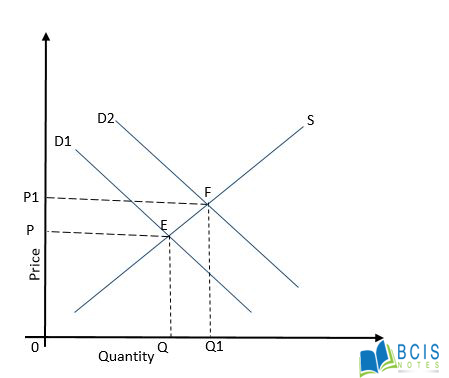
Types of Microeconomics
On the basis of analysis, the equilibrium between two variables in microeconomics is divided into three parts as micro statics, comparative and dynamic which are also called types of microeconomics. The types of Microeconomics is explained separately as stated below;
• Micro Statics
• Comparative Micro Statics and
• Micro Dynamics
Micro statics is the analysis of one microeconomics equilibrium. It analyzes the economic situation at a point. Suppose, individual demand and supply are two economic variables, their relationship can be explained with the help of the following figure.

fig:micro-statics
In this figure, the demand curve (D) intersects the supply curve (S) at a point E to determine the price OP and quality OQ at a given time period. This analysis is a static analysis of equilibrium.
Comparative Micro Statics compares two or more equilibrium positions without regard to the transitional period and the process involved in the adjustment. It deals with the comparison of two equilibrium positions of the variable.

fig: comparative micro statics
The demand curve shift from D to D1 due to the change in the variable of demand function and a new equilibrium is formed at F, which determine the price OP1 and quantity OQ1. The comparison between the values of the variables between E and F position in Comparative Statics.
Microdynamics deals with the time path and process of the adjustment itself. It studies the activities of the variable during the time of adjustment from one equilibrium position to another.

fig: micro-dynamics
This figure shows how the equilibrium is shifted from E to F. It shows the time path and the change position from E to A, B and C to reach F. It also shows how the variables adjust during the movement between two equilibrium positions.
You may also like this: Function of Microeconomics Theory

Leave a Reply